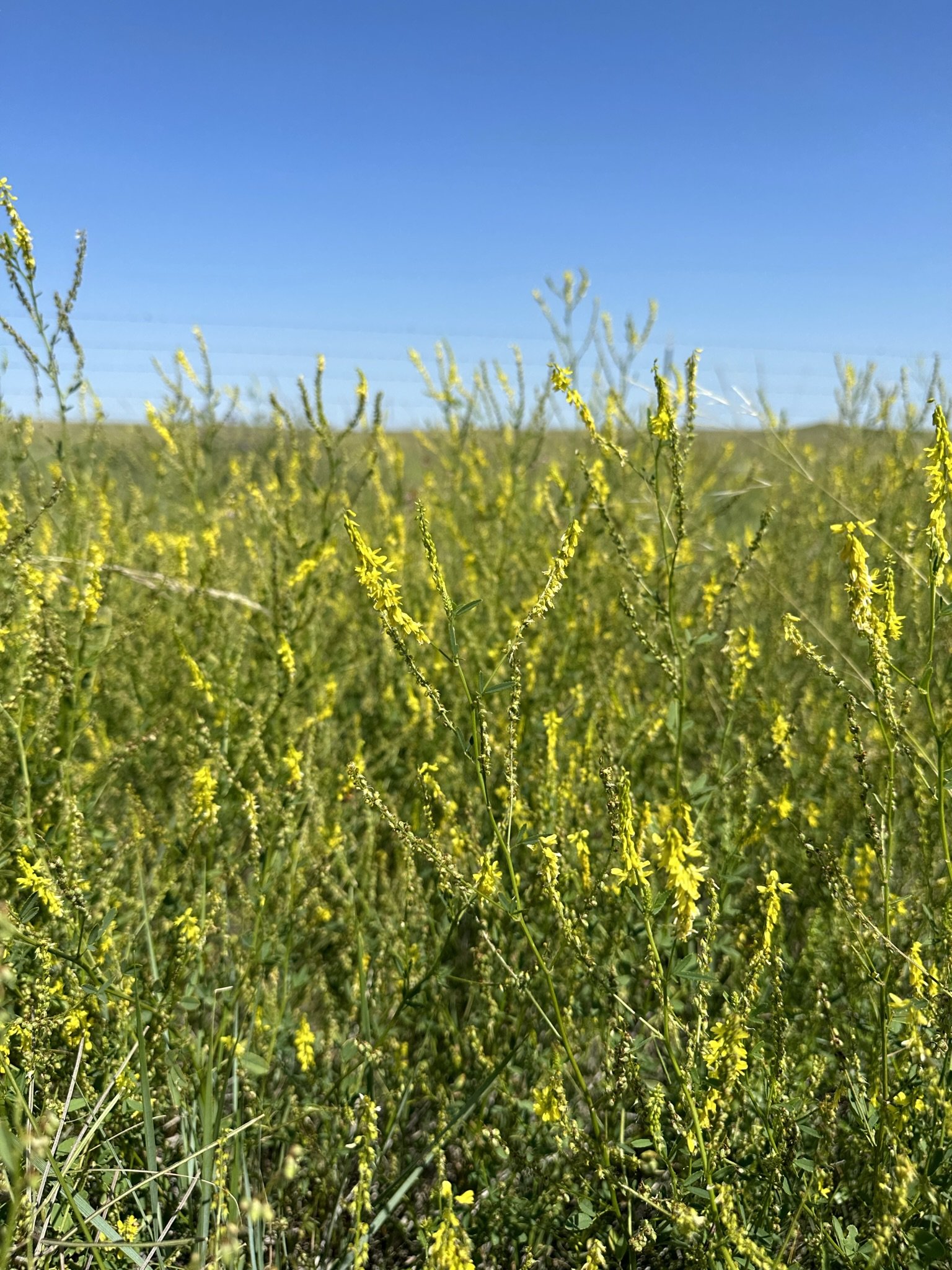Artist: Sarah Red-Laird
Title: Bee Habitat in Cyanotype 40
Location: 777 Bison Ranch, South Dakota
Project: Bison & Bee Habitat
Flower: Melilotus officinalis, Yellow Sweetclover
Bee(s) in cyanotype: Apis mellifera, Honey bee
Materials: Cyanotype, barnwood
Field Season: 2023
Composed: 2023
In the summer of 2022 I met the bison and their people at 777 Bison Ranch. My goal was to collect bee pollen for two days (for a project I was working on) and then continue on down the road. But I became stuck in a tar pit of wonder and I couldn’t move.
I ended up taking refuge at the ranch for about a week. Mimi, Moritz, Cody, and Justin were so kind, hospitable, and interested in my work.
I threw my project out the window and started devising a whole new way to look at the landscape.
In 2019 researchers found that the 777 Bison Ranch, unique for their approach utilizing adaptive multi-paddock grazing, boasted improved fine litter cover, improved water infiltration, two to three times the available forage biomass, improved plant composition, and decreased invasive plant levels and bare ground, relative to both light and heavy continuous grazing (Hillenbrand et al, 2019).
We believe the aforementioned attributes of bison grazing could provide excellent habitat for bees, and we would like to deepen our understanding of this dynamic.
We plan to understand the potentially synergistic or mutualistic interactions between honey bees, native bees, and bison by installing multi-year vegetation and pollinator monitoring areas at the 777 Bison Ranch. These efforts will examine:
🦬 Bee nesting frequency – examine the presence/absence of soil nesting bee sites in areas grazed by bison,
🦬 Bee habitat – identify the full complement of flowering forb species in the study area, and determine which forbs support pollinators while avoiding consumption by bison,
🦬 Bee communities – comprehensive sampling the of native bee species (including soil, stem/twig, wood, hive, and cavity nesting bees) using different passive and active trapping methods,
🦬 Pollen availability and nutritional content in flowers (joint project with USDA Tucson Bee Lab).
Learn more about 777 and their holistic practices here.
The 777 Bison Ranch is host to many honey bee apiaries belonging to a local beekeeper. They purchase the honey from the beekeeper and sell it in their online shop, and in their storefront in Rapid City, SD.
Honey bees are common around the ranch and especially love the introduced plants like alfalfa, sweetclover, sand lucerne.
Melilotus officinalis, goes by the common names sweet yellowclover, yellow melilot, ribbed melilot and common melilot. It is a species of legume native to Eurasia and introduced in North America, Africa, and Australia.
This is a very controversial flower. Beekeepers love it, as it produces a good honey crop, but it can also be exceedingly invasive.
At the 777 Bison Ranch, however, this plant has stayed within small boundaries and lives in balance with other plants - including sensitive natives. I credit this to the holistic management principals implemented by the ranch managers, and the ability of the bison to engineer a healthy and diverse ecosystem.

